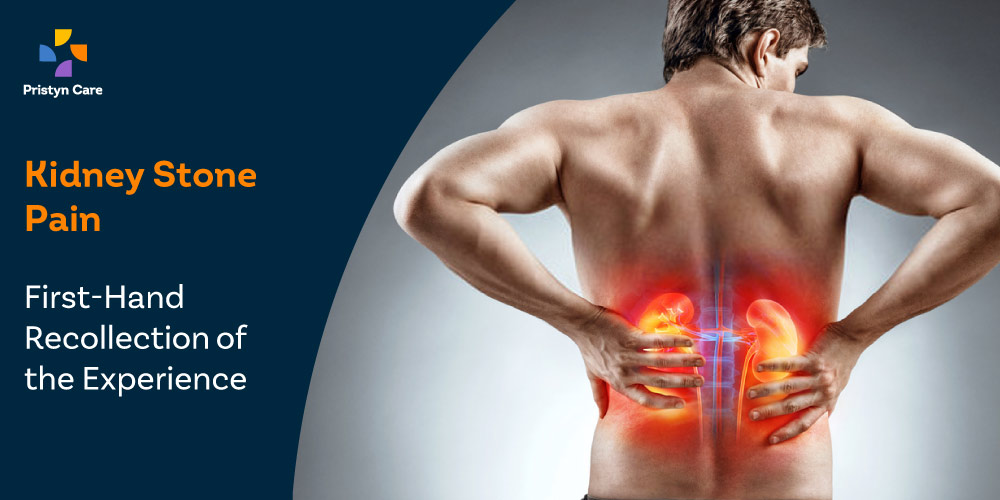
Kidney stones or renal calculi are among the most common diseases in the world. Most of us are already familiar with the gravity of pain inflicted by these stones. Renal stones can appear as crystals that can be as small as a grain of sand or as large as a golf ball. Patients who recognize kidney stone pain often describe it as a sharp sensation of a knife stuck in the back and being twisted all around. Some patients even described kidney stone pain as mini earthquakes in the lower abdomen. Needless to say, renal stones are the epitome of pain and discomfort to a lot of people. However, kidney stone pain intensifies gradually over a period of time if the symptoms are ignored.
While people argue the difference in the intensity of kidney stone pain, from one patient to another, is based on the size, location, and the number of the stones, the fact remains that prolonged treatment can cause severe complications. Therefore, detecting early signs of kidney stones is crucial. Here is the first-hand experience of the kidney stone and what to expect?
Early Signs and Pain Areas of Kidney Stones
A small-sized renal stone may not cause serious pain and can be flushed out of the body through urine by drinking excess water or prescribing medications from the physician. However, not all kidney stones are silent. Some stones can be stubborn and keep getting bigger in size if not treated in time. Such stones cause unbearable sharp pain that can come and go as the stone moves inside the body. Some of the early signs and symptoms of kidney stones include the following –
- Severe back pain in the flank area
- Pain while urinating
- Foul-smelling urine
- Nausea or vomiting
- Fevers and chills
- Colored urine

The kidney stone pain areas include sharp pain in the abdomen on either side, lower back (around the flank area), or around the groin. The symptoms of kidney stones differ based on the medical condition of the patient and how long the stones are stuck inside the kidney or the ureter.
Managing Symptoms of Kidney Stones at Home
Small kidney stones (size less than 4mm) can be managed at home with medications and home remedies. Several OTC medications and therapeutic measures also help manage the early symptoms related to renal stones. However, the most effective kidney stone treatment involves the surgical removal of stones. Advanced laser surgery like Retrograde intrarenal Surgery (RIRS), Extracorporeal shock wave lithotripsy (ESWL), ureteroscopy (URSL), and laparoscopic surgery (PCNL) are very effective surgical procedures that can help reduce pain and discomfort significantly. Here is how you can manage kidney stones symptoms at home-
High Fluid Intake:
The doctor often recommends drinking enough water or increasing the fluid intake that can dilute the urine and prevent the formation of stone. Doctors often recommend drinking 2-3L of water in a day so that the small stones can flush out through the urine. The doctor may also prescribe medications that can reduce the pain during the expulsion of stones.
Medications:
Some medications such as Ibuprofen (Advil, Motrin IB), Acetaminophen (Tylenol), and Naproxen (Aleve) can help relieve pain due to kidney stones. Doctors also recommend the use of alpha-blockers that relaxes the muscles in the ureter to ease the movement of stones quickly and smoothly. Some of the alpha-blockers prescribed by the doctor include Tamsulosin (Flomax) and the drug combination Dutasteride and Tamsulosin (Jalyn).
Dietary Restrictions:
Kidney stone pain can be managed by inculcating dietary restrictions and encouraging fiber-rich food. Obesity is one of the risk factors for kidney stones. Therefore, it is important to avoid food that can increase the amount of oxalate, calcium, or uric acid in the body. Here are some foods that you must avoid to further restrict the formation of renal stone –
- Avoid excess sodium which is usually present in canned vegetables, processed foods such as chips, etc.
- Avoid excess consumption of foods rich in monosodium glutamate, sodium nitrate, or sodium bicarbonate (baking soda)
- Avoid chocolates, sweet potatoes, coffee, peanuts, etc. Food that contains high levels of oxalates.
- Consume less calcium-rich supplements since calcium stones are among the most common renal stones. However, a natural source of calcium is good for the body.
- Avoid too much consumption of animal protein such as beef, poultry, fish, pork, etc. that can progress kidney stones.
- Increase your citric acid intake in foods such as lime, lemons, etc. Citric acid binds with the calcium oxalate crystals and prevents them from growing bigger in size.
Read more: Home Remedies for Kidney Stone Pain
Conclusion:
Kidney stone pain is considered one of the most excruciating in regards to intensity and discomfort. People who have kidney stones usually feel fatigued, suffer from fever and chills, experience sharp pain in the back or side of the abdomen, and usually urinates foul-smelling and cloudy urine. Kidney stones can lead to severe complications and so it is generally recommended that you seek medical assistance before the size of the stone grow big enough to cause extreme pain. There are several home remedies for kidney stone pain that can be done if the symptoms are not severe. Avoiding certain foods and encouraging a balanced diet can prevent the size of stones from getting more significant. Consult the physician as soon as you experience kidney stones pain and decide the course of the procedure according to the diagnostic tests.








